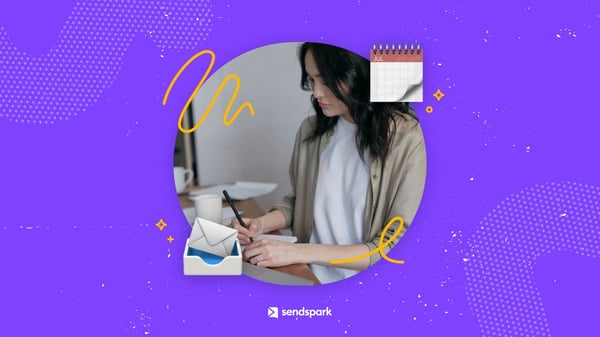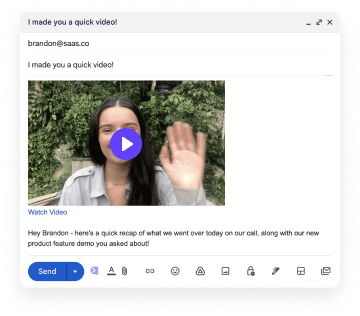Email marketing remains a powerful part of interacting with potential clients and customers. When you interact with them, you’ll get some people who want to work with your business, but others may respond to your emails by saying they aren’t interested in it.
While an uninterested email can lower your morale, you must understand that it happens all the time. You also must focus on crafting the best possible response to a “not interested” email. So ensure you review the below tips to increase your odds of turning this unfortunate email into a new client.
The Benefits of a Good Response
If you come up with a good response and know how to handle “not-interested” emails, you’ll enjoy excellent benefits to help your business, such as the following:
- Leave positive impressions
- Convert people into customers
- Avoid burning bridges
Even if people don’t want to work with your business or purchase products, you can leave them feeling good about your business. If you provide a good response, they’ll have a solid opinion of your company, making it easier to form relationships or receive referrals later.
Additionally, if you have a high-quality response and send them relevant links, they may decide to work with you. People appreciate honest and helpful people, so show how your business cares.
You’ll also avoid burning bridges when you focus on a good response. They may appreciate your approach and want to work with you in the future when they find themselves in a position to do so.
You can’t harm your business by focusing on suitable responses to “not-interested” emails. Poor responses and not leaving an answer can cause more problems and even damage your business in the long run.
How to Craft the Best Response to a “Not-Interested” Email
Now that you understand why a good response to a “not interested” email matters, you’ll want to know how to craft an ideal reply. Doing so requires you to remember various points, so you’ll learn how to make adjustments and craft a perfect answer to make a positive impression each time.
Develop Templates With Time
You can’t use the same template for every situation. For example, if you develop a template for potential clients to work with you, you’ll want to use a different template for customers when you share products with them.
Ensure you develop multiple templates over time, so you’ll choose the best option based on the situation. You should also consider cloud storage to make it easier to share your templates with your employees, giving them an easy way to fill in the information.
Doing so will take time and development, but you’ll create a database to form email responses as needed. Encourage your employees to copy the templates and make adjustments to make them as appealing as possible to your prospective clients and customers.
Consider Their Perspective
A template will help you create ideal emails, but you’ll need to consider their perspective to craft your emails. For example, if your clients have a busy schedule, you’ll want to avoid any fluff or additional discussions, so cut to the point.
On the other hand, as you talk with customers who have plenty of contacts, you may want to take the referral approach. Doing so involves telling them how you can reward them for recommending your business to others who wish to make purchases or work with you.
Ultimately, you must treat customers and clients as individuals. If they think you just copied a message over, they have less of a reason to bother with it.
As you come up with answers, remain truthful. If a customer or client finds out you lied to them, they won’t want to work with your business, damaging the relationship permanently. Instead, find the best way to present the information and tell the truth.
Create Personalized Videos
While adding links can help you improve your traffic, you’ll want to direct them to an ideal location to increase their odds of becoming customers. Doing so involves creating calls to action (CTAs) to get them to do something that may convert them.
If you want a compelling CTA to draw attention and show your effort, you should create personalized videos. You can use these messages to help you:
- Follow up with people
- Give invitations to action on “not-interested” emails
- Show there are no hard feelings
You always want to leave people with a good impression, so try to record high-quality videos. Doing so will show them your interest and the extra mile you go to make your message personable rather than just copying responses for people to send.
After all, you can’t copy and paste a video, especially if you mention their name in the response. Not only that, but people find videos more appealing than links, so you’ll increase your odds of getting a positive response and potential customers through videos.
Leave Them an Option to Return
You never want to end an email in a way that ends with you. Always set it up to leave them with the option to act, so they can always turn towards you if they want to make a purchase later or form a partnership with your business.
The process involves always leaving the ball in their court. You want to put them in a position where they decide what to do next, so you don’t leave yourself in a stalemate. If you don’t provide an option to act, you’ll need to get the chance to turn around a “not-interested” email.
For example, if they say they aren’t interested in your business, you can invite them to click on a link or contact you if they have an interest later on. Even if they don’t act on it immediately, you leave the door open if they ever want to go with it.
While you should focus on CTAs and do your best to turn “not-interested” emails around, you should never push too hard. Doing so will make you seem overly pushy, ruining future chances of working with them.
Keep It Short
When it comes to email etiquette, you want to keep your messages short. Most people won’t spend much time going through different emails, so you should stick with four to six sentences to get your entire message across to them.
If you make it any longer, people will skim through the email and ignore most of it. Either that or they may not read the email altogether, meaning you’ll lose any interest and have them potentially develop a negative opinion towards your business.
You want to stick with a few sentences since people can read them in under 30 seconds. On top of that, it forces you to think about what you want to say, so you’ll convey the information as efficiently as possible, respecting their time.
Start by stating you understand they don’t have an interest. You can then mention your interest in remaining in contact with them while wanting to work with them in the future. You can then leave them a CTA, so they know what to do if they change their mind later.
Test Different Approaches
You’ll never get the ideal email on your first try. You’ll need to keep testing different approaches, see how they work, and change your strategies as you see fit. It’ll require you to research and understand what to focus on when it comes to ideal information. You’ll also need to:
- Identify your KPIs
- Keep track of reactions
- Learn about your audience
Key performance indicators (KPIs) refer to specific metrics you track. For example, if you see how many of your “not-interested” emails turn into future customers, you can gauge your success with changes.
The same involves tracking their reactions. Ensure you save responses, or the lack of answers, to see how people react to your tactics. Doing so will help you see where your approaches fall short so you can adjust your videos and emails based on that information.
You can also learn about your audience by keeping track of the data. See what applies to your company demographics and what they prefer, and adjust your emails accordingly. As you do so, you’ll figure out the best ideas to appeal to their preferences.
In short, have your business remain in a constant improvement mindset. Focus on making each new response to a “not-interested” email into the latest best answer. That way, you continuously focus on what works and make changes based on those details.
Final Remarks
Crafting the proper response to a “not-interested” email can help you in various ways. You can gain customers or forge relationships later, and you’ll identify the best techniques to increase your odds of converting your prospects into customers.
As you develop your responses and learn how to handle “not-interested” emails, you’ll gain more customers in the long run and leave positive impressions on others. If you want additional help to maximize your odds, you can get in touch to scale your outreach with Sendspark!



